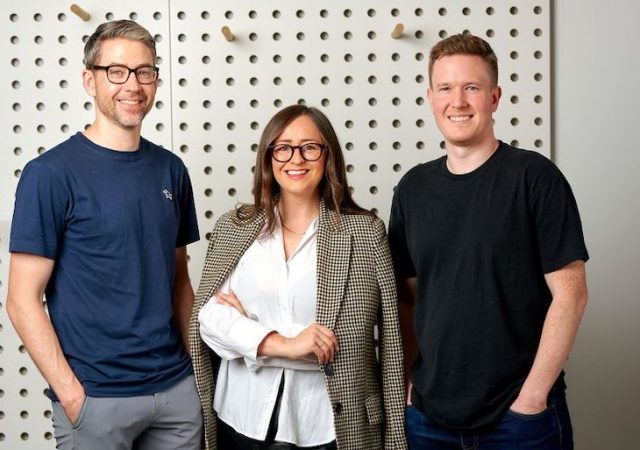2020 has been the year of the unexpected; the year of the ‘pivot’.
We’ve seen world-class chefs provide home deliveries, gin distilleries making hand sanitiser and high fashion brands creating life-saving PPE.
Businesses may have been forced to adapt quickly, but it was the innovative and creative responses that delivered new ways to meet the needs of customers – and access totally new markets.
Few businesses will emerge from this pandemic unchanged. Despite this unchartered territory, businesses have adopted new ways of working and thinking about how we work. Whether through adopting new technology, developing new strategies or reconsidering their purpose (or products), we’ll see a continued evolution and changing priorities.
Below are three areas that will assist small businesses and startups in preparing for recovery and capturing new opportunities.
Go cashless
Australia’s new normal will ultimately include less cash, and that’s good for business.
Even before the pandemic, Australians were early adopters of contactless card payments and contactless mobile payments were on the rise.

MYOB economist Jon Manning. Photo: supplied
Roy Morgan’s digital payments report in May 2020 showed a total of 10.8% of Australians now use contactless mobile payment services like Apple Pay and Google Pay, up from 7.1% a year ago.
With Governments and businesses encouraging contactless to help stop the spread of COVID-19, and retail giants like Coles and Woolworths temporarily increasing the limit for contactless to $200 during the pandemic, these types of payment are becoming standard.
Contactless payments speed up the circulation of money through the economy, improving business’ cash flow along the way.
MYOB research shows 48% of small businesses feel stress and anxiety about their finances. Going contactless is one way to help reduce payment times, build a steady cash flow and help eliminate some of that stress.
If the velocity by which money electronically changes hands from buyer to seller gathers pace and bigger transactions are possible, economic recovery will speed up too. A critical step to speed up the flow of money through the economy will be to adopt contactless payments.
Invest more broadly in technology and digitisation
Digitisation allows businesses to grow their profile, extend their network and communicate more effectively with their existing and wider audience. It creates more chances for people to find your business (and love it), thereby increasing your potential pool of customers.
The coronavirus pandemic accelerated changing consumer behaviours, marking the biggest customer shift to online the world has ever seen. And businesses are taking note.
Over the next 12 months, MYOB Business Monitor data shows 26% of small business owners plan to increase investment in selling products and services online. Some of the benefits small businesses identified include generating more customer enquiries and leads (37%), appearing more professional (36%), and generally make it easier for customers to do business with them (34%).
Setting up a social media presence increases opportunities for customer interaction (41%) – with Facebook the most popular channel for small businesses overall (75%), but strong growth across LinkedIn (36%) and YouTube (30%) demonstrating the rising popularity of content-based marketing.
Anything that is currently done with paper today is a candidate for digitisation: be it menus, logging timesheets or recording phone numbers in cafes for contact tracing.
Wherever they are on the technology adoption spectrum, businesses – and their customers – are not likely to step back from the gains they have made through digitisation.
Look for opportunities where others don’t
While more than 20% of small businesses are planning to decrease their marketing spend (both online and offline), this presents an opportunity for business owners to take a chance and capture some great rates and unusual opportunities for exposure – with a number of media outlets offering discounted rates or placements that are usually fully booked out.
Another source of opportunity lies within your existing network.
With the revival of the neighbourhood and a focus on hyperlocal communities, what opportunities can you find on your doorstep? Can you collaborate with neighbouring businesses? Can you exchange, add value or create something new together?
My local cafe showed amazing creativity in moving aside their tables (lying unused during takeaway only service) to make room on their floor to showcase a car from a local dealership. The cafe was experiencing great footfall traffic – while the dealership was closed – providing a solution for both parties.
Collaborations come back to network utilisation and expansion. How can you create something mutually beneficial that builds on and adds value to your existing relationships? And furthermore, how can you connect with another brand that might expose you to new audiences?
In a challenging climate for businesses and individuals, there’s something incredibly powerful and effective when brands and people come together.
There is no doubt that the coming months will be tough. COVID-19 has challenged many things – our health, our economy, and in some cases, our livelihoods. But with the tenacity and resilience that businesses owners apply on a daily basis – and with a resurgence in community spirit and inclination to shop and support local – we can respond to the opportunities and challenges ahead, together.
- Jon Manning is a economist at MYOB




















Trending
Daily startup news and insights, delivered to your inbox.